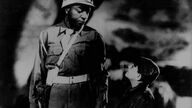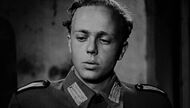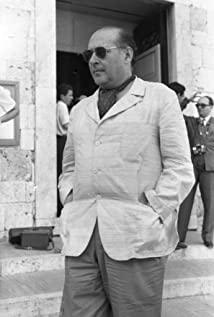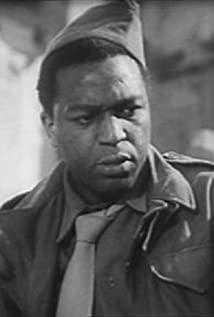What is the difference between neorealism and documentaries, the daily life of news reporting? As an amateur fan, personal feelings and understanding.
Documentary or our daily life actually has no focus. Just as I am on the subway at the moment, what I can see is reality, while neorealism films focus on the era or theme in the background of this reality. Characters and events, let the audience's attention follow the direction of the camera and follow the direction of the protagonist of the story to understand the reality step by step. Therefore, neorealist films are not simply replays of reality. But after observing and understanding a lot of reality, extracting typical characters and cases and performing literary dramatization on them, such as the establishment of opposing characters or opposing positions, the design of the plot will also be obvious. At the same time, it is recreated according to the dramatic reality, so that the audience's viewing experience has a strong sense of reality and participation. Since the stories and characters are born out of reality, and basically use real scenes and non-professional actors, the audience can unconsciously bring them into themselves. The feelings of daily life, along with the development of the plot, make corresponding emotional fluctuations that may appear in reality, so as to achieve the purpose of allowing the audience to better feel and think about life.
Looking at Rossellini's war trilogy under this understanding will reveal his greatness.
The undefended city of Rome was filmed in 1945, the war in 1946, and the German Year Zero in 1948. In the period just after the end of World War II, Rossellini did not preach the glory and greatness of the victory of the war, but reflected on the irreparable damage caused to all the people under war at different stages of the war. In my opinion this is a risk, the government has never liked to preach the misery of the people.
Secondly, the continuity between the three films and the richness of the angles of thinking and observation also greatly improve the quality of the film. The Undefended City of Rome tells the story of the deeds of the people of all occupations in Rome against the German invaders after Germany occupied Rome in 1944. This is Italy when it was still under the invasion. The war is connected through six short stories with little connection to connect the hardships of people of different classes in different parts of Italy against the background of the German retreat. The German Year Zero is based on post-war Germany, depicting on the ruins of Berlin how a child of a defeated country experienced step by step helplessness and despair, and finally committed suicide by killing his father. The destruction of human nature by war is deepening step by step, and the absurdity of war is even more ridiculous and helpless under the highlight of the story.
The undefended city of Rome is full of ups and downs, and the grasp of reality and the control of the direction of the story are precise and delicate. The protagonists seem to be heroic communists and priests who violated their teachings but kept justice The real protagonists of the film, because they represent the kindness and justice that will come, because they are the future. It's just that the plot design is too deliberate, not bad but not the best. So there are two better ones.
The war consists of six basically unrelated short films. Through the six seemingly unrelated short films, we can see that although the war is coming to an end, the aftermath of the war will remain on the people who have experienced the war forever. The turns between each short film are quick, and while I'm still moved by the camaraderie and homesickness between the GIs who don't speak the language and the Italian girls who die at the guns of German soldiers, then the second story begins . One second, the black American who was a police officer in Italy was still singing while drunk, and the next second he was panicked by the bankruptcy of the Italian slums and ran away. In this turn, Rome was liberated. But the life of the Romans after liberation was not very good. The once warm and lovely Italian girl has become a street lady like most people, and the American soldier who has a crush on her throws away the girl he loves as the address of a prostitute. Then the next story started, an American nurse who wanted to find a guerrilla captain and an Italian man who wanted to find his family went through the war, and the director didn't tell us that the result was that a guerrilla who was covering them died in front of the nurse. . The fifth story begins in the footsteps of the victorious Allied forces, the conflict between three American soldiers and academicians who live in a monastery, because one is Jewish and the other is not, and this short film is in the army priest's support for freedom of belief end of the speech. The last story takes place a few months before Germany's surrender, and a group of partisans and Allied pilots can't wait for the final months to be brutally slaughtered along with the villagers who assisted them.
Compared with the undefended city of Rome, there is no relationship between each short film of the war, and the drama is therefore weakened. At the same time, because the director's grasp of the abrupt end of each ending is very precise, people feel that the war has destroyed humanity. Giving the audience too much sentimental time is a sign of the urgency of reality. Therefore, the reality of this film is stronger, but it is not difficult to watch due to the weakening of the drama and the low logical connection between the stories.
And the last Deutsche Year Zero was a bit hopeless. Although we feel despair, we will cherish beauty and overcome despair. It's just that the reality of despair and depression is still a bit uncomfortable.
In postwar Berlin, a 12-year-old boy carries the burden of a family. But even so, the society does not give him the right to bear heavy burdens. The cowardly elder brother is afraid that he will be punished for being a soldier and hides at home all day. The father who is seriously ill is bedridden every day, and the elder sister has no choice but to go out every night. Sell your body to subsidize your family. In such a situation, the little boy was lured by his former teacher to sell Hitler's speech, but instead he gained the motivation and meaning of survival from it, which is really ironic. In the end, the teacher's inadvertent guidance and instructions pushed the boy to the abyss of murdering his father, but he was criticized by the teacher after he murdered his father. Family, society, beliefs have all collapsed, and he is just a 12-year-old boy who wants to play football and jump the grid. How can he bear the consequences of all this collapse? At the end, after he played the slide for the last time, he covered his face in tears and looked at the place where he once lived, where he killed his father, and jumped off the building without any hesitation to commit suicide.
It begins with the boy digging a grave hoping to get a job to support his family, and ends with the boy committing suicide by jumping off a building. What did the war do to him, to us, and to mankind?
Reality turns out to be the best material, but sometimes reality is too desperate.
View more about Paisan reviews











